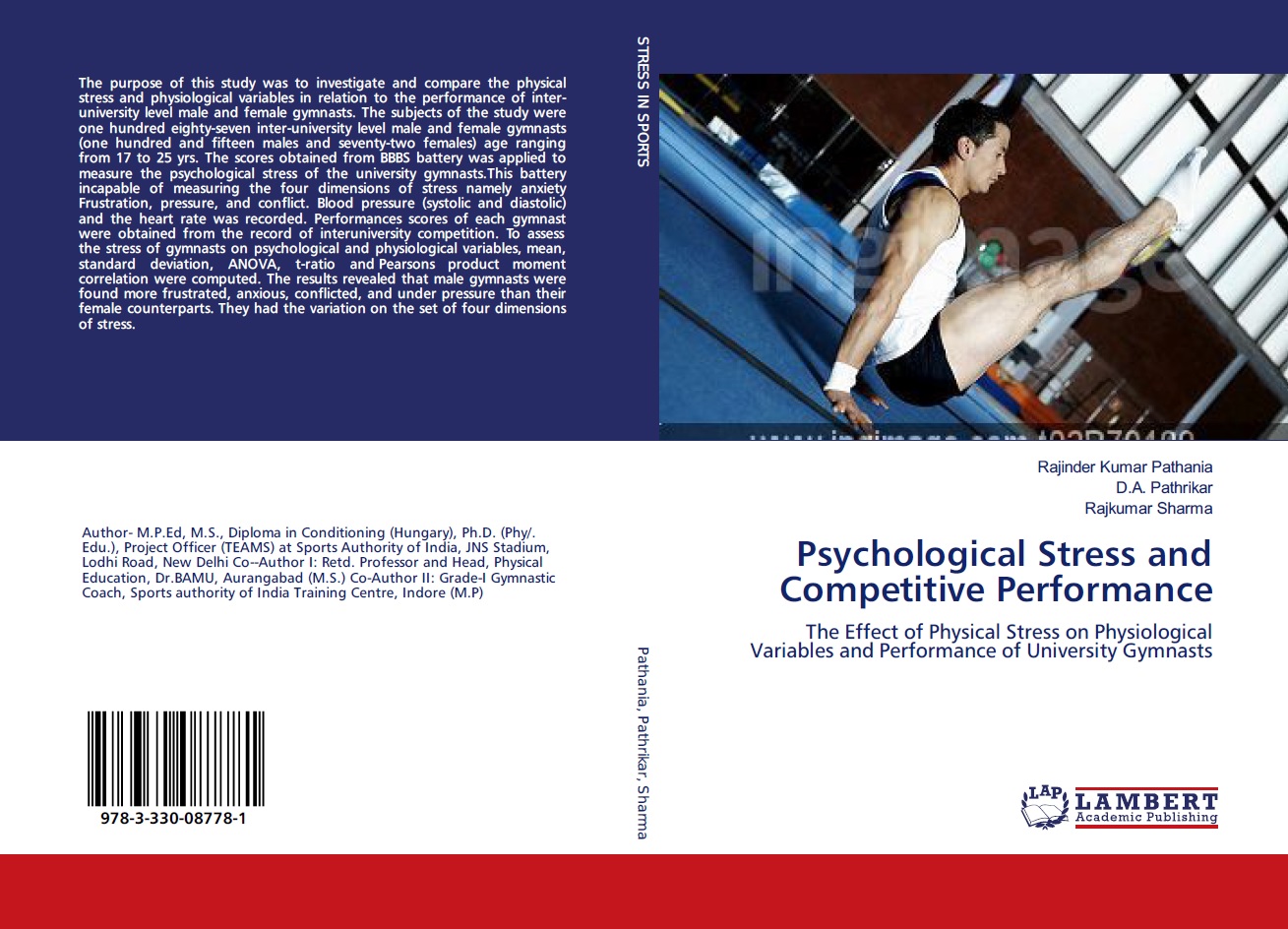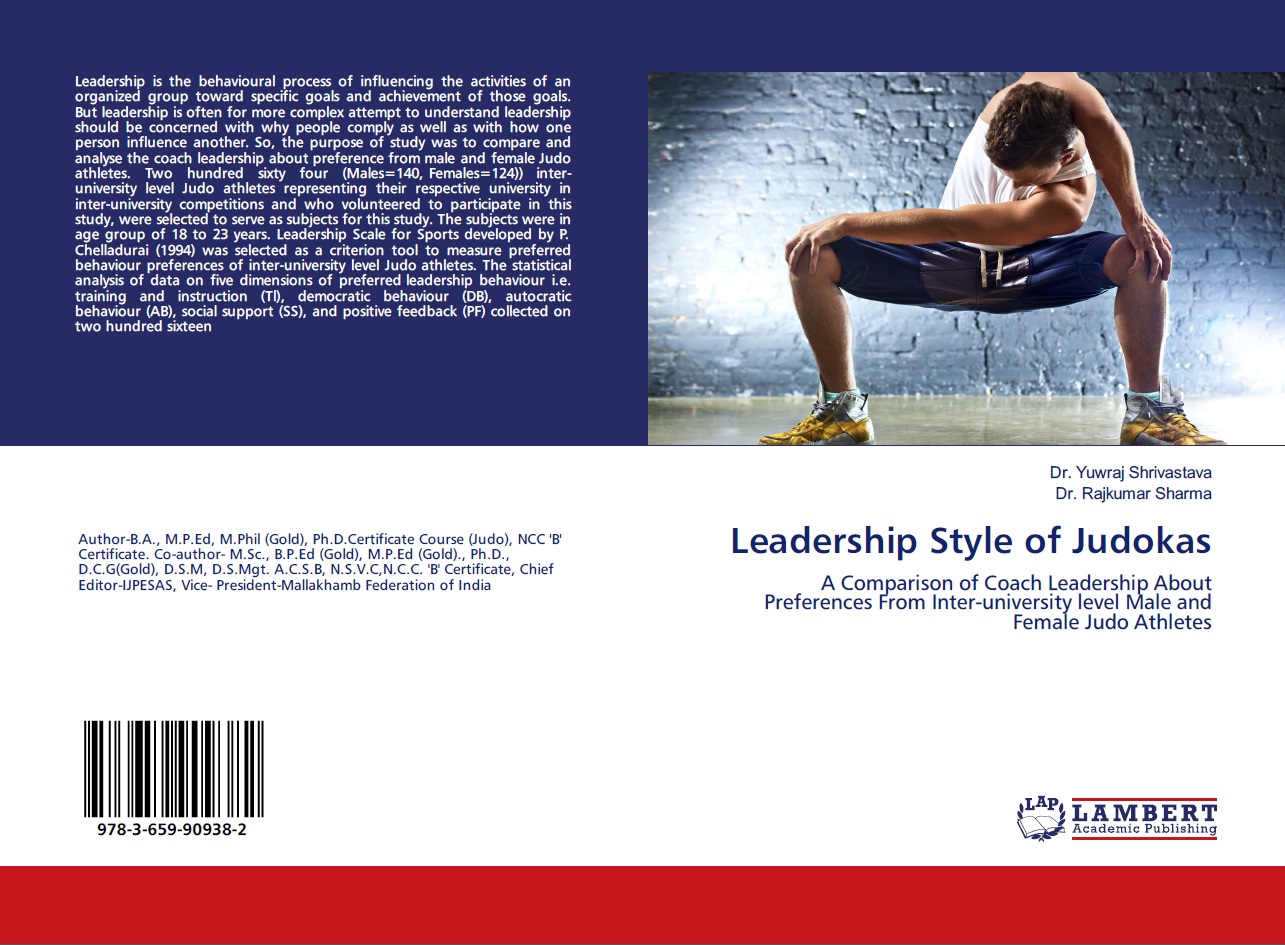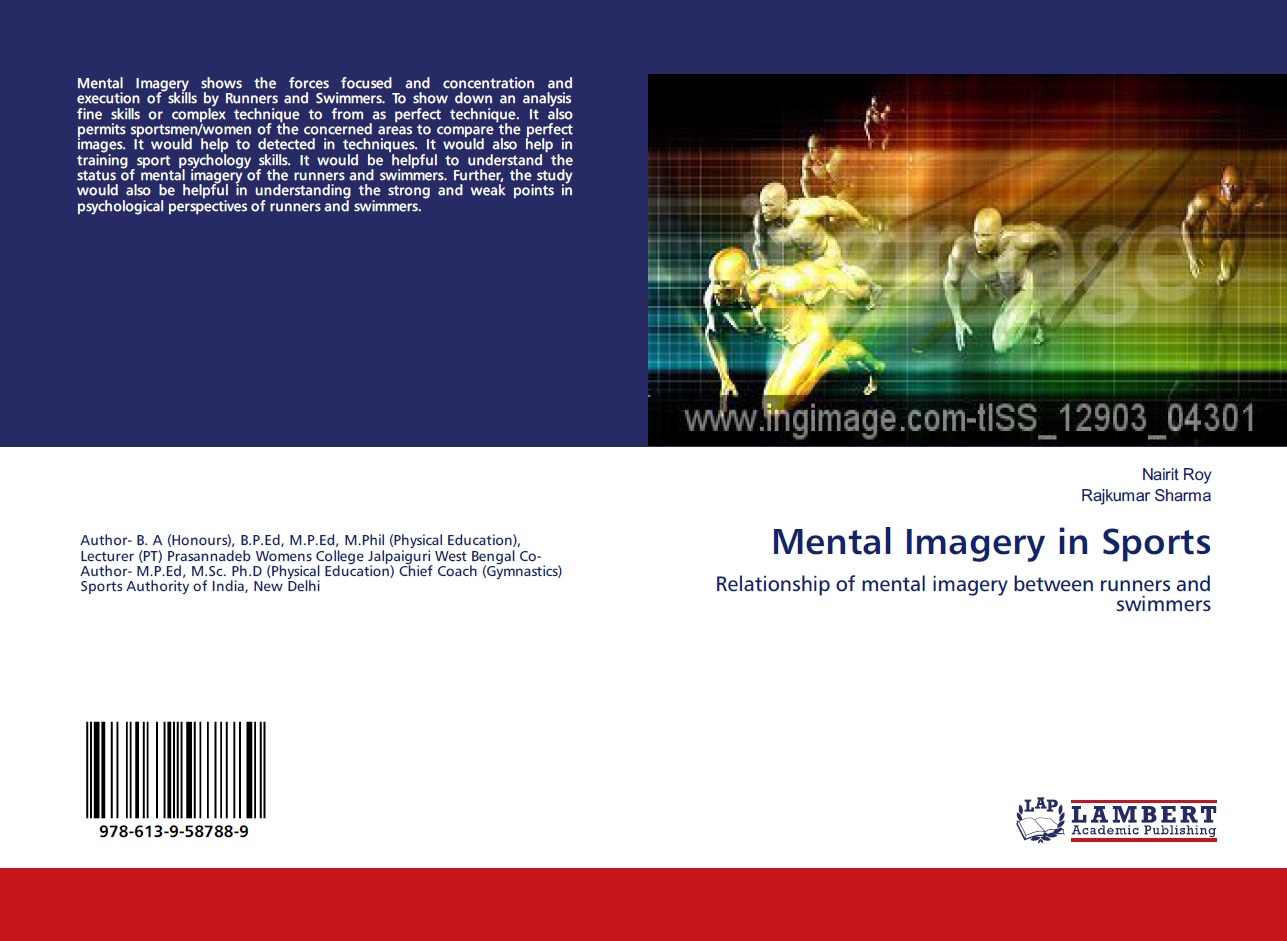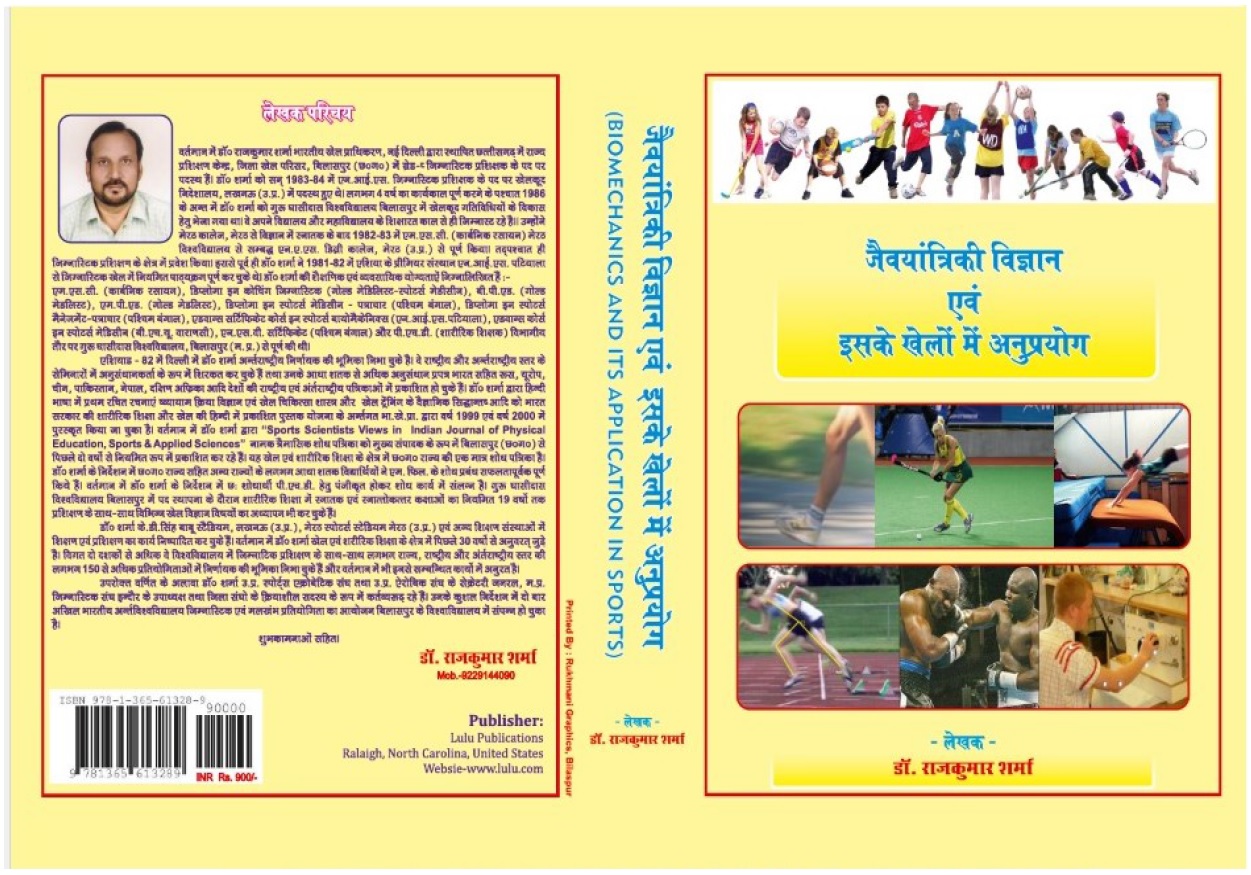| S.No. | Total View Count | Title of Manuscript | Page No | Download/ PDF |
|---|---|---|---|---|
| 1 | ANALYSIS OF SOCIO-ECONOMIC STATUS AND PSYCHOLOGICAL FACTORS POTENTIAL OF THE PLAYING ABILITY OF SCHOOL BOYS OF INDIAN SCHOOLS IN OMAN Author: Mohandass L1 & Dr. T. Parasuraman 2 | 25-40 |  5 5 |
Article info
doi no.: 05-2016-44975451; https://doi-ds.org/doilink/04.2024-71875143/IJPESAS/V13/NO.2/APRIL-2023/A5
AFFILIATIONS:
1. Research Scholar, School of Physical Education and Sports Science, Hindustan Institute of Technology and Science, Padur, Chennai 600103. rp.21703020@student.hindustanuniv.ac.in
2. Assistant Professor, School of Physical Education and Sports Science, Hindustan Institute of Technology and Science, Padur, Chennai – 600103,
Corresponding Author: tparasuramanassitantprofessor@gmail.com
Students' playing skill is significantly impacted by their socioeconomic status. Someone's or a group's socioeconomic standing is determined by factors such as his or her level of education, job, and parental income. A person's socioeconomic status (SES) and way of life are both connected with their level of health. This research analyzed how socioeconomic status (SES) affected the respondents' overall health. We also investigated if and how one's way of life can moderate the connection among socioeconomic status and health. There were substantial beneficial benefits on both physiological and mental health from the way of life. Further, the connection between socioeconomic status and health was mediated by one's way of life. This study investigates the association between the socio-economic position and psychological factors and their potential impact on the playing ability of school boys from Indian schools in Oman. The aim of the research is to identify the socio-economic factors and psychological characteristics that may influence the performance and abilities of these students in sports activities. The questionnaires assess variables such as family income, parental education level, access to resources, self-esteem, motivation, and self-efficacy. These factors are hypothesized to have an influence on the playing ability of the participants. The qualitative phase involves conducting in-depth interviews with a subset of the participants to gain deeper insights into their experiences, perceptions, and attitudes towards sports and the impact of socio-economic and psychological factors on their abilities. The interviews provide a more nuanced understanding of the underlying factors that contribute to or hinder their playing ability. The findings of this study are expected to contribute to the existing literature on the relationship between socio-economic status, psychological factors, and sports performance among school boys. Additionally, the results may inform educational institutions, policymakers, and sports organizations in developing strategies and interventions to enhance the playing ability and overall well-being of students from Indian schools in Oman.
Keywords: socioeconomic status, Sports activity, Indian schools, psychological factors, playing ability.
References
- Lutfey, K.; Freese, J. Toward some fundamentals of fundamental causality: Socioeconomic status and health in the routine clinic visit for diabetes. Am. J. Sociol. 2005, 110, 1326–1372.
- Smith, G.D.; Bartley, M.; Blane, D. The black report on socioeconomic inequalities in health 10 years on. Br. Med. J. 1990, 301, 373–377.
- Harper, S.; Lynch, J. Trends in socioeconomic inequalities in adult health behaviors among US States, 1990–2004. Public Health Rep. 2007, 122, 177–189.
- Mackenbach, J.P.; Irina, S.; Roskam, A.J.R.; Schaap, M.M.; Gwenn, M.; Mall, L.; Kunst, A.E. Socioeconomic inequalities in health in 22 European countries. N. Engl. J. Med. 2008, 358, 2468–2481.
- Jon Ivar, E.; Steinar, K. Social causation, health-selective mobility, and the reproduction of socioeconomic health inequalities over time: Panel study of adult men. Soc. Sci. Med. 2003, 57, 1475–1489.
- Dahl, E. Social mobility and health: Cause or effect? Br. Med. J. 1996, 313, 435–436.
- West, P. Rethinking the health selection explanation for health inequalities. Soc. Sci. Med. 1991, 32, 373–384
- Simandan, D. Rethinking the health consequences of social class and social mobility. Soc. Sci. Med. 2018, 200, 258–261
- Fraser, G.E.; Shavlik, D.J. Ten years of life: Is it a matter of choice? Arch. Intern. Med. 2001, 161, 1645–1652
- Cockerham, W.C. Health lifestyle theory and the convergence of agency and structure. J. Health Soc. Behav. 2005, 46, 51–67. [ Pronk, N.P.; Anderson, L.H.; Crain, A.L.; Martinson, B.C.; O’Connor, P.J.; Sherwood, N.E.; Whitebird, R.R. Meeting recommendations for multiple healthy lifestyle factors: Prevalence, clustering, and predictors among adolescent, adult, and senior health plan members. Am. J. Prev. Med. 2004, 27, 25–33.
- Morawa, E.; Erim, Y. Health-related lifestyle behavior and religiosity among first-generation immigrants of polish origin in Germany. Int. J. Environ. Res. Public Health 2018, 15, 2545.
- Walker, S.N.; Sechrist, K.R.; Pender, N.J. The health-promoting lifestyle profile: Development and psychometric characteristics. Nurs. Res. 1987, 36, 76–81.
- Morgan, P. L., Farkas, G., Hillemeier, M. M., and Maczuga, S (2009), Risk factors for learning-related behavior problems at 24 months of age: Population-based estimates, Journal of Abnormal Child Psychology, 37(3): 401-413
- Aikens, N. L., and Barbarin, O. (2008), Socioeconomic differences in reading trajectories: The contribution of family, neighborhood, and school contexts, Journal of Educational Psychology, 100, 235-251.
- Islam, M. R., and Khan, Z. N. (2017), Impact of socio-economic status on academic achievement among the senior secondary school students, Educational Quest: An International Journal of Education and Applied Social Sciences, 8(2), 665.
- Rather, A.S. and Sharma, K.K. (2015), Impact of Socioeconomic Status on the Academic Grades of Secondary Level Students, International Journal of Social Science and Interdisciplinary Research, 4(5): 11-15
- Kim, S. W., Cho, H., and Kim, L. Y. (2019), Socioeconomic status and academic outcomes in developing countries: a meta-analysis, Review of Educational Research, 89(6), 875-916.
- Rodriguez-Hernandez, C. F., Cascallar, E., and Kyndt, E. (2020), Socio-economic status and academic performance in higher education: A systematic review, Educational Research Review, 29, 100305.
- Bhat, M. A., Joshi, J., and Wani, A. (2016), Effect of socio-economic status on academic performance of secondary school students, The International Journal of Indian Psychology, 3(4), 32-37.
- Zhang, F., Jiang, Y., Ming, H., Yang, C., and Huang, S. (2020), Family socioeconomic status and adolescents’ academic achievement: The moderating roles of subjective social mobility and attention, Journal of Youth and Adolescence, 49(9), 1821-1834
- Egunsola, A. O. E. (2014). Influence of home environment on academic performance of secondary school students in agricultural science in Adamawa State Nigeria. Journal of Research & Method in Education, 4(4), 46 -5.
- Hardy, L.; Mihrshahi, S.; Gale, J.; Drayton, B.A.; Bauman, A.; Mitchell, J. 30-year trends in overweight, obesity and waist-to-height ratio by socioeconomic status in Australian children, 1985 to 2015. Int. J. Obes. 2017, 41, 76–82.
- Lee, H.J.; Kim, S.H.; Choi, S.H.; Lee, J.S. The association between socioeconomic status and obesity in Korean children: An analysis of the Fifth Korea National Health and Nutrition Examination Survey (2010–2012). Pediatric Gastroenterol. Hepatol. Nutr. 2017, 20, 186–193.
- Herrera, J.C.; Lira, M.; Kain, J. Socioeconomic vulnerability and obesity in Chilean schoolchildren attending first grade: Comparison between 2009 and 2013. Rev. Chil. Pediatr. 2017, 88, 736–743
- Al-Hussaini, A.; Bashir, M.S.; Khormi, M.; AlTuraiki, M.; Alkhamis, W.; Alrajhi, M.; Halal, T. Overweight and obesity among Saudi children and adolescents: Where do we stand today? Saudi J. Gastroenterol. 2019, 25, 229–235.
- Griffiths, P.L.; Rousham, E.K.; A Norris, S.; Pettifor, J.M.; Cameron, N. Socio-economic status and body composition outcomes in urban South African children. Arch. Dis. Child. 2008, 93, 862–867.
- Costa-Font, J.; Mas, N. Globesity? The effects of globalization on obesity and caloric intake. Food Policy 2016, 64, 121–132
- Bobbio, T.G.; Morcillo, A.M.; Filho, A.D.B.; Goncalves, V.M.G. Factors Associated with Inadequate Fine Motor Skills in Brazilian Students of Different Socioeconomic Status. Percept. Mot. Skills 2007, 105, 1187–1195.
- Handal, J.A.; Lozoff, B.; Breilh, J.; Harlow, D.S. Effect of community of residence on neurobehavioral development in infants and young children in a flower-growing region of Ecuador. Environ. Health Perspect. 2007, 115, 128–133.
- Grantham-McGregor, S.M.; Fernald, L.C.; Kagawa, R.M.C.; Walker, S. Effects of integrated child development and nutrition interventions on child development and nutritional status. Ann. N. Y. Acad. Sci. 2014, 1308, 11–32.
- Hardy, L.; King, L.; Farrell, L.; Macniven, R.; Howlett, S. Fundamental movement skills among Australian preschool children. J. Sci. Med. Sport 2010, 13, 503–508.
- Pienaar, A.E.; Visagie, M.; Leonard, A. Proficiency at Object Control Skills by Nine- to Ten-Year-Old Children in South Africa: The NW-Child Study. Percept. Mot. Ski. 2015, 121, 309–332.
- Mülazimoglu-Ballo, Ö. Motor Proficiency and Body Mass Index of Preschool Children: In Relation to Socioeconomic Status. J. Educ. Train. Stud. 2017, 4, 237–243.
- Aalizadeh, B.; Mohamadzadeh, H.; Hosseini, F.S. Fundamental movement skills among Iranian primary school children. J. Fam. Reprod. Health 2014, 8, 155–159.
- Venter, A.; Pienaar, A.E.; Coetzee, D. Extent and nature of motor difficulties based on age, ethnicity, gender and socio-economic status in a selected group of three-to five-year-old children. S. Afr. J. Res. Sport Phys. Educ. Recreat. 2015, 37, 169–183.
- Armstrong, M.E.G.; Lambert, E.V.; Lambert, M.I. Physical fitness of South African primary school children, 6 to 13 years of age: Discovery vitality health of the Nation study. Percept. Mot. Skills. 2011, 113, 999–1016.
- Eather, N.; Bull, A.; Young, M.D.; Barnes, A.T.; Pollock, E.R.; Morgan, P.J. Fundamental movement skills: Where do girls fall short? A novel investigation of object-control skill execution in primary-school aged girls. Prev. Med. Rep. 2018, 11, 191–195.
- Navarro-PatónRLago-Ballesteros, J.; Arufe-Giráldez, V.; Sanmiguel-Rodríguez, A.; Lago-Fuentes, C.; Mecías-Calvo, M. Gender differences on motor competence in 5-year-old preschool children regarding relative age. Int. J. Environ. Res. Public Health 2021, 18, 3143.
- Morley, D.; Till, K.; Ogilvie, P.; Turner, G. Influences of gender and socioeconomic status on the motor proficiency of children in the UK. Hum. Mov. Sci. 2015, 44, 150–156
- Cliff, D.P.; Okely, A.D.; Smith, L.M.; McKeen, K. Relationships between fundamental movement skills and objectively measured physical activity in preschool children. PediatricExerc. Sci. 2009, 21, 436–449.
- Hardy, L.L.; Reinten-Reynolds, T.; Espinel, P.; Zask, A.; Okely, A.D. Prevalence and correlates of low fundamental movement skill competency in children. Pediatrics 2012, 130, e390–e398.
- Pienaar, A.E.; Van Reenen, I.; Weber, A.M. Sex differences in fundamental movement skills of a selected group of 6-year-old South African children. Early Child Dev. Care 2016, 186, 1994–2008
 admin@sportscientistsviews.com
admin@sportscientistsviews.com





